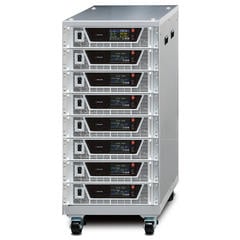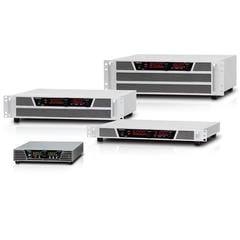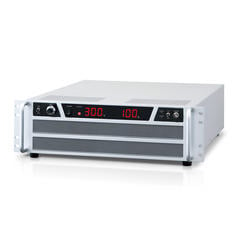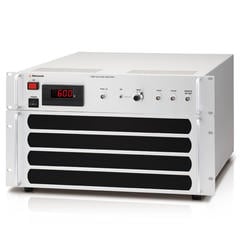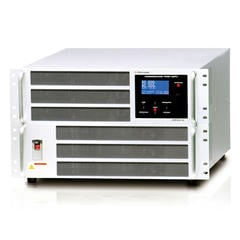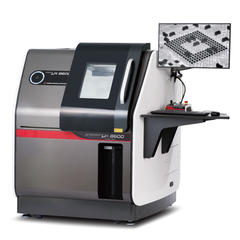Photovoltaic (PV) refers to the process of generating electricity by using solar cells to convert sunlight directly into electrical energy. Depending on the scale, PV systems are also referred to as solar cells, modules, panels, or arrays. Solar power is generated by using solar panels, which are made up of solar cells laid out in series or parallel.
Photovoltaic power can be generated on a small scale. Solar panels, in combination with batteries, are attached to road signs and street lights to provide electricity for nighttime lighting. Photovoltaic power is also attracting attention as renewable energy. For example, the number of eco-friendly houses that combine solar panels with storage batteries is increasing. In recent years, an increasing number of mega-solar power plants have been built by installing large quantities of solar panels on vacant land.
A photovoltaic power generation system generally consists of a solar panel (or PV panel), a charge/discharge controller, a storage battery, a solar inverter, and a load.
The systems can be broadly classified into "Stand-alone (off-grid) PV systems" and "Grid-tied (on-grid) PV systems," and they have the following characteristics.
Off-Grid PV System (Stand Alone Solar Power System)
It can be divided into systems for DC loads and AC loads.
Figure 1 shows a stand-alone PV system where all circuits, including the loads, operate on DC power.

When using a load that operates on AC power, such as home appliances, the solar inverter is used to convert the DC power generated by the solar cells into AC power, as shown in Fig.2 below.
However, a disadvantage is that the system cannot supply power once the battery is depleted. Also, inverters consume power constantly. It is important to note that inverters consume standby power even when there is no load.

Grid-tied PV System (On-Grid Solar Power System)
The grid-tied PV system is a system where the photovoltaic (PV) system is connected to the utility grid. This allows for the sale of surplus generated power back to the utility company.

Figure 4 illustrates an example of a PV system that uses household batteries to store electricity.
Any shortfall in electricity can be purchased from the grid. Such systems, which combine solar power generation with battery storage and grid connection, are often integrated into a Home Energy Management System (HEMS). They are also commonly known as hybrid solar systems.

Examples of Matsusada Precision Products Application
Solar Inverter
The electricity produced by solar panels is direct current (DC). This DC power needs to be converted to alternating current (AC) for use in homes and factories. Therefore, solar inverters are used to convert DC power to AC, as illustrated in the figure below.

The development of solar inverters for PV applications requires a DC power supply of approximately 300 to 600 V to simulate solar cells. In such development and testing scenarios, a DC power supply, known as a solar array simulator or PV simulator, is used on the input side, while an AC electronic load is placed on the output side.
IV characteristic curves of PV Cells and Panels
Methods for measuring the I-V (current-voltage) characteristic curves of photovoltaic cells and panels include the use of electronic loads, bipolar power amplifiers, four-quadrant power supplies, and DC-DC converters. Matsusada Precision manufactures these types of products. Bipolar power amplifiers, such as our DOP series, are particularly useful for measuring I-V characteristic curves due to their four-quadrant operation, which allows for seamless sweeping through zero volts, and their ease of use. By measuring the I-V curve, the maximum power point (MPP) of a PV cell can be determined, which is crucial for Maximum Power Point Tracking (MPPT) control in solar inverters.

Additionally, Matsusada Precision offers a wide range of DC power supplies, regenerative power supplies (bidirectional power supplies), and high-voltage power supplies suitable for the development and manufacturing of solar inverters and batteries.
Abbreviations related to Photovoltaics:
MPPT: Maximum Power Point Tracking
PWM: Pulse Width Modulation
STH: solar-to-hydrogen efficiency
- Related Keywords:
-
- Solar Cell
- Perovskite solar cell (PSC)
- Solar Power
- Inverters
- Battery
- Energy Storage
- Solar Panel
- Mega Solar
- Solar/Photovoltaic
- Solar cell manufacturing equipment
- HEMS
- Partial off-grid solar
Recommended products
High-voltage power supplies and regenerative power supplies (bi-directional power supplies) for the development and manufacturing of solar inverters and batteries




